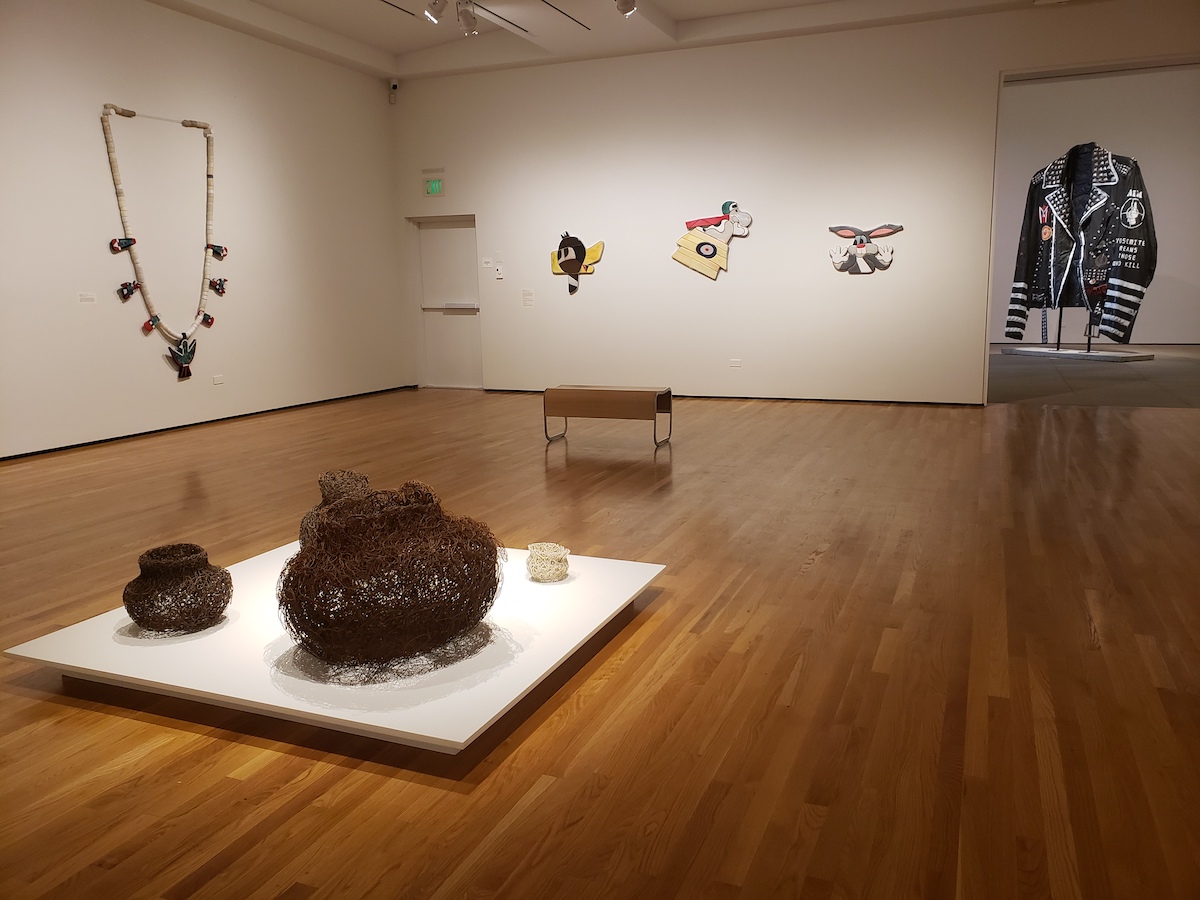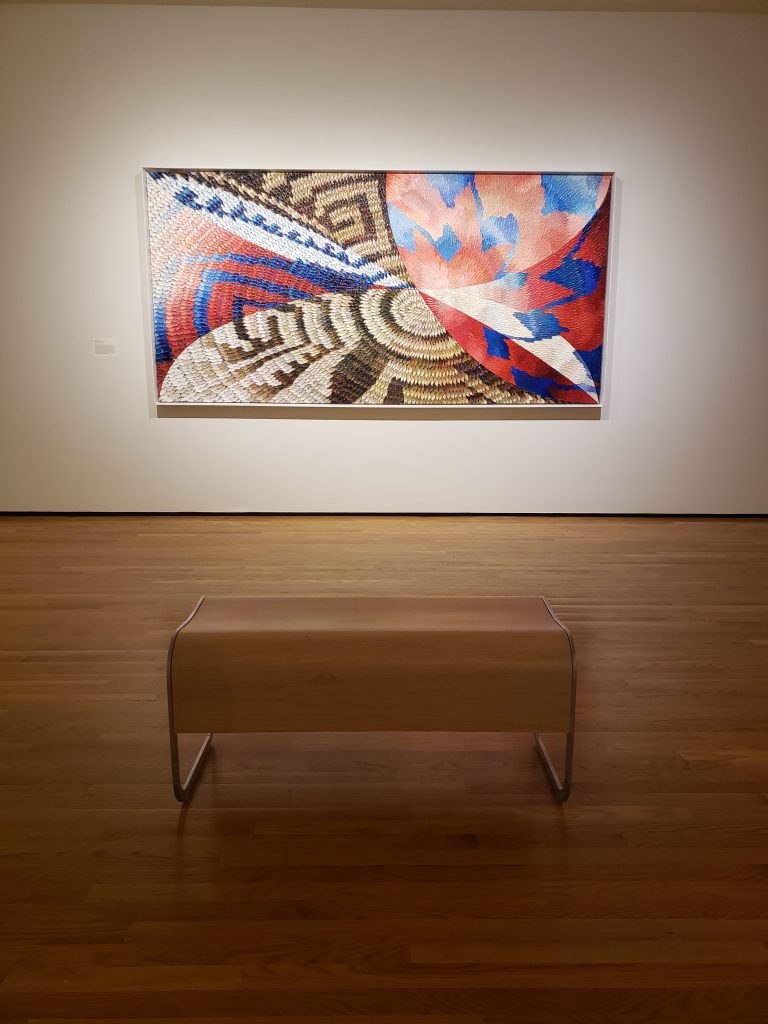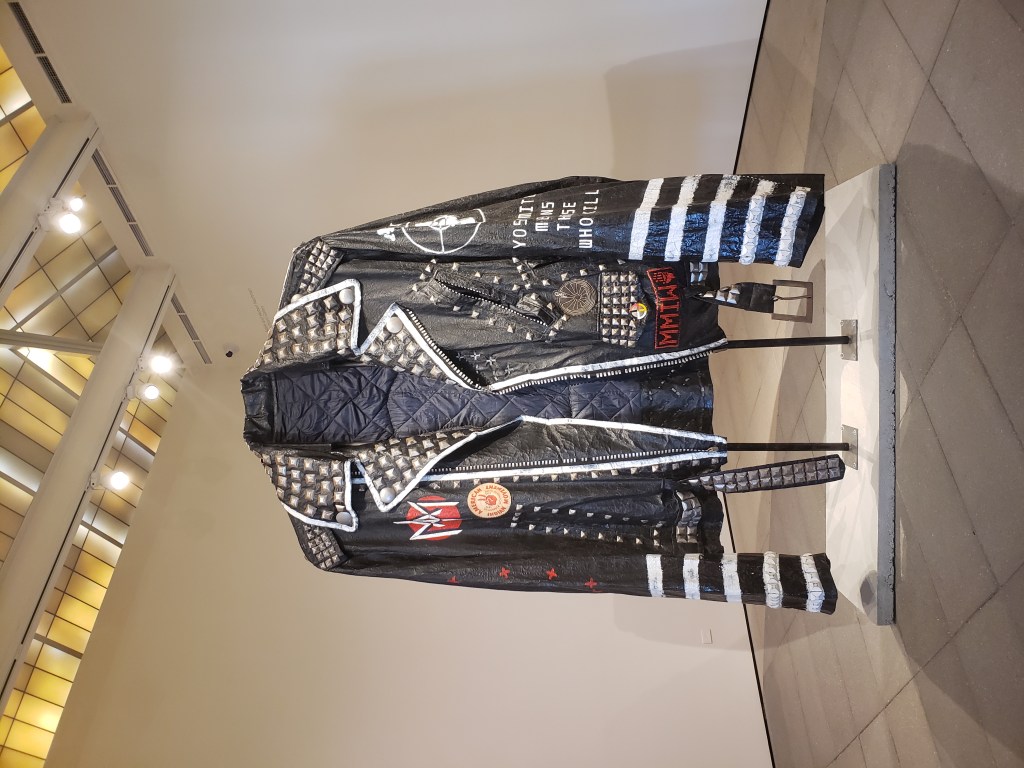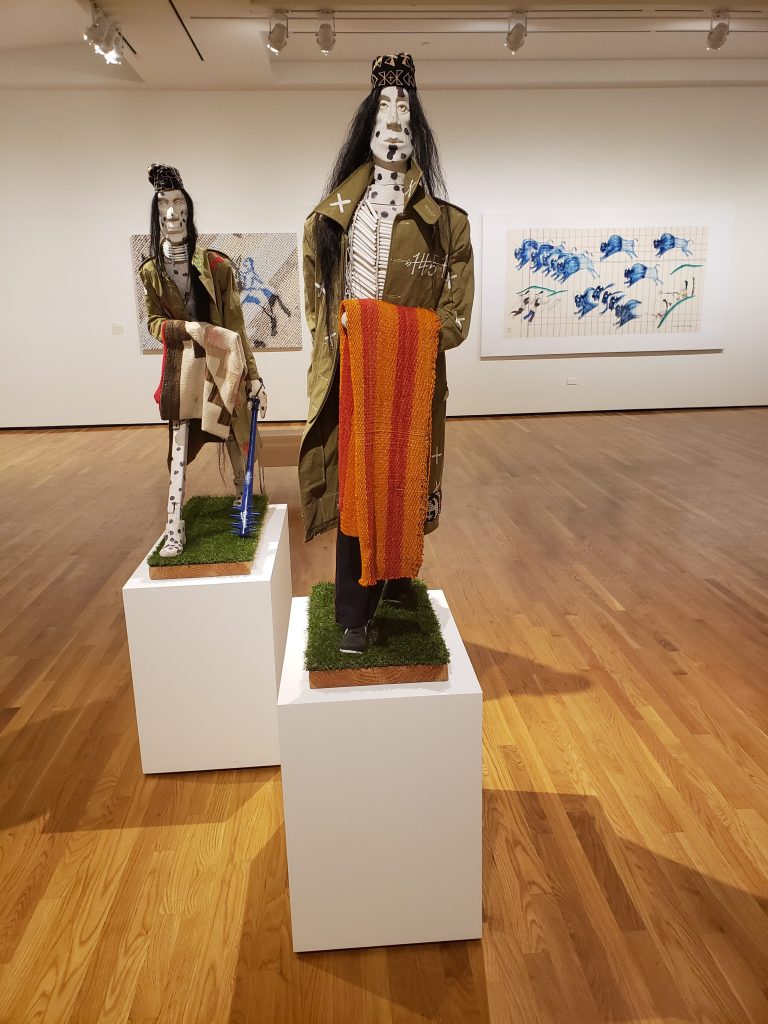Review | ‘Ishi Glinsky: Upon a Jagged Maze’ at UC Santa Barbara’s AD&A Museum
Los Angeles Artist Ishi Glinsky, in his Museum Show Debut, Kicks Off Season

First impressions, subtle and otherwise, matter when it comes to the delicate art of museum exhibition design. In the case of Ishi Glinsky: Upon a Jagged Maze, the dynamic opening exhibition of the new season for UCSB’s Art, Architecture and Design Museum (museum.ucsb.edu), the immediate impact is multifold, subtle and otherwise.
Entering the museum’s foyer gallery, we are greeted by the awesome sight of Coral vs. King “Snake,” a monumental, iconic sculpture towering just over 10 feet tall, takes the form of a punky black leather jacket, festooned with patches celebrating Native American issues and calls to radical action, including AIM (American Indian Movement) and the logo for the organization Missing and Murdered Indigenous Women. On one sleeve, the phrase “Yosemite means those who kill” — an indictment of genocidal white expansionism — is prominently scrawled.
This large, loaded sculpture boldly introduces us to the general milieu of Glinsky’s art, juxtaposing and mashing up references to his Native American roots and a hybrid contemporary aesthetic all his own. At age 40, this is the Arizona-born and Los Angeles–based Glinsky’s first official museum exhibition, and the result is enthralling and culturally engaging. Smartly curated by museum director Gabriel Ritter, Upon a Jagged Maze, on view through January 22, 2023, surveys more than a decade of the artist’s evolving work in multiple media, colored by his cultural heritage as a Native American artist (he is part of the Tohono O’odham tribe).
While the jacket epic is the most intentionally scale-related statement in the show, a selection of paintings, sculptures, weavings (fashioned from chain link metal), and other forms coheres into a broad and persuasive set of works and series-with-a-cause. The generous expanse of a show consuming most of the museum’s galleries allows his work to breathe and reflect the significant diversity of Glinsky’s artistic fruits.
By nature, Glinsky’s art is multi-layered, inviting multiple points of entry and interpretation. In “Spitfire,” the reference point is Native American beadwork, transformed into a punk/skateboard culture framework (Spitfire is a brand of skateboard wheels). The largest representational (also allegorical) piece in the show is “Dead Weight,” a vibrant example of his “ledger art” works. In this series, Glinsky imitates the resourceful yet tragic tradition of reservation-era native people capturing aspects of their fading and stolen past lives on lined ledger paper, a symbol of the white invaders’ world. “Dead Weight” is a vintage, pre–Manifest Destiny vision of buffalo hunting, in mythic, dream-like terms.
Other series are colored by ulterior expressive motives, often craftily deploying found objects. Seemingly innocent baskets are made from oxidized rebar wire in chain-link loops (nodding to incarceration and being “fenced in”) and ceremonial necklaces made from shards of ceramic plates from thrift stores. Seemingly colorful and cheery wall-relief sculptures enlist cartoon figures we know and love — Snoopy, Bugs Bunny — in tragi-comic setups.
Upon a Jagged Maze closes on an eye-soothing grace note, relatively speaking. The museum’s back gallery hosts three large, warmly painted and semi-abstract canvases, in which rippling and interlacing patterns pay homage to the ancient Native American arts of basketry and weaving. Glinsky mixes traditional painting methods with spray painting, adding a sheen of mystique and contemporary patina to the gestural palette. In effect, the back room conjures up a sensuous and congenial last impression, in a generally fascinating and thought-provocative exhibition.
Support the Santa Barbara Independent through a long-term or a single contribution.






